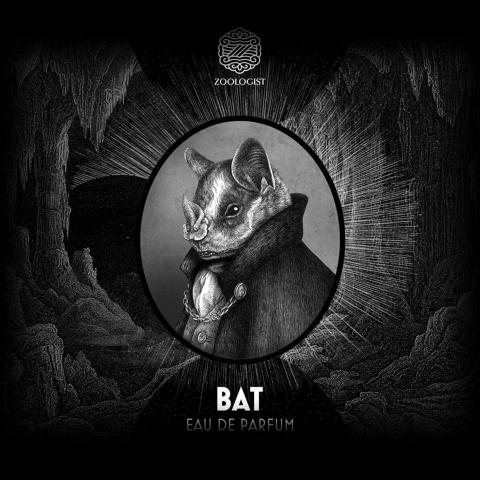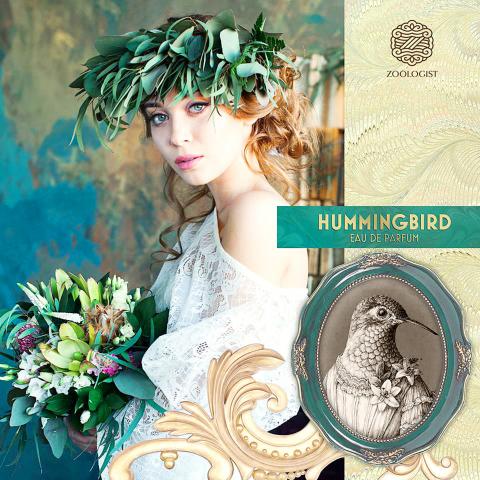In 2012, Victor Wong, a video game designer for a toy company in Toronto, had a tiny midlife crisis in his hotel room while on vacation. He felt burned out on work but was strangely revived by sniffing the hotel toiletries, which came from a niche fragrance line he can no longer recall.
What he does remember is that he swooned over the scents, which were spicy, musky and intense. He knew then and there that he wanted to make perfume.
Returning home, Wong began haunting the message boards of the cult perfume sites BaseNotes and Fragrantica, feverishly researching the formulas behind his favorite scents. The same notes kept popping up: castoreum, civet, musk, ambergris. He realized that he was drawn, in an instinctual way, to animal-derived scents — or rather (because most perfumery materials that come from animals are now banned or heavily regulated) to their lab-created chemical equivalents.

photo courtesy of zoologist
When Wong worked up the courage to put out an open call online for a perfumer to help him create his fragrance, he already had a specific, and beastly, concept in his head. He would call his line Zoologist, and he would release a series of scents named for the wild creatures that inspired them.
WONG’S MENAGERIE

photo courtesy of zoologist
The British perfumer Chris Bartlett was the first to respond, with a bold idea for the maiden fragrance in the Wong menagerie. He wanted to capture the essence of a beaver. Bartlett proposed a scent that used no real animal ingredients, but smelled strongly of wet fur, dank musk, felled trees and the sour buttery odor of a beaver’s castor sac secretions.
Wong said yes immediately. When Beaver hit the market in 2014, it immediately became a polarizing sensation in the niche perfume world. CaFleureBon, which reviews cult perfumes, named it one of the best of the year, and fans flocked to its peppery, sweaty funk. But, as Wong now admits, “it was ultimately too challenging for a lot of people.”
“A lot of people thought it was interesting but said that they would never wear it,” he said. The smell of damp pelt (and the not-so-subtle bodily connotations of the name) made some customers feel uncomfortable rather than swaddled in the dense odor.
So Wong asked Bartlett to revisit his formula, and this fall they released Beaver 2016, a riff on the original idea but with more “fresh air and river top notes to make it more attractive.”
Wong has released six other perfumes, including Bat, a pungent reverie on banana, cave dirt, musk and overripe figs from the perfumer Ellen Covey that won the top prize at the 2016 Art and Olfaction Awards. The venerable fragrance critic Luca Turin gave Bat a rave, writing that “the fragrance seems lit from within by the earth note all the way to drydown.”
It turns out that Wong’s animal instincts were right along: The demand for fauna-inspired scents this year is cresting.
“Animalic” is a buzzword floating around the industry, now that the minimalist, clean trend has given way (at least in high-fashion niche circles) to more feral fragrance clouds. Maybe it’s the desire of millennials to reclaim their beastly odors in an age of technological detachment, but fragrance buyers are newly excited to smell as if they come from an elegant zoo. A new line capitalizing on this trend is Eris Parfums, a collection from Barbara Herman, a writer-turned-perfumer who runs the cult-popular vintage fragrance site Yesterday’s Perfume and whose book, Scent and Subversion: Decoding a Century of Provocative Perfume, was published in 2013. When Herman decided to switch from writing about perfume to making it, she knew that the bestial would serve as her primary inspiration.
‘OBSESSED WITH ANIMALICS’
“I got absolutely obsessed with animalics,” she said. “I had these little bottles of old Lanvin and Piguet scents, which rely on notes like civet and castoreum, and I had such a physical reaction to them. They were rounder, deeper. They made me emotional.”
In her research, Herman found that many of her favorite vintage perfumes relied on a base accord called Animalis, developed by a French company in the 1920s. Animalis, in its original form, was an unctuous golden liquid comprising civet, castoreum, costus and musk, and smelled a bit like body odor, dirty scalp, perspiration, butter and a horse stable. Though it sounds unappealing on its own, when combined with other materials, consumers couldn’t resist it. Animalis found its way into popular scents like Robert Piguet Visa and YSL Kouros.
Though the note changed once real animal products were banned in modern perfumery, Herman still wanted to mimic its singular tang. This summer, she introduced three perfumes, including Ma Bete, which pairs boozy florals like jasmine and neroli with more brutish notes of benzoin, patchouli and a new chemical base blend that mimics the vintage Animalis.
“The word ‘beast’ kept coming up for me,” Herman said. “It’s like the tension between Beauty and the Beast. She’s afraid but drawn, identified but repelled. It is compelling now, especially with the Internet, to remind ourselves that we are animals.”
A few of the latest crop, like the Papillon Artisan Perfumes Salome (a heady cumin-forward bestial) and Bruno Fazzolari and Antonio Gardoni’s experimental new scent Cadavre Exquis (which smells a bit like rigor mortis), are aggressively difficult, with the intent to curl and confuse the nose. This can draw consumers who want to confront their darker desires.
THE SCENT OF MORTALITY
Stephen Dirkes, a self-taught perfumer who runs the fanciful Euphorium Brooklyn from his workshop in Greenpoint, said that animalic scents are, in a twisted way, about confronting mortality. “There is a death drive in these smells,” he said over coffee, waving a tin of authentic ambergris from the belly of a whale under my nose. It smelled of boiled fat, mollusks and salt, and was impossible to stop sniffing.
“I like to think about how fashion is often elevated as an expression of personal style, like art you can wear, but it’s also an expression of self-loathing,” he said. “Grasse, in France, where great perfumery came from, was also a tannery town. The smell of death and the smell of flowers went hand in hand.”
One of Euphorium’s best-selling scents is Suedois, a spicy leather concoction that still contains sharp hints of tannery tang. The same earthy leather can be found in the YeYe Parfums signature scent Equus, which the perfumer Ernesto Sanchez Bujanda said was directly inspired by “the life of a horse: stables, wood, hay, sweat, skin and the beauty of the animal.”
Civets, musks and other beastly secretions become most desirable as the weather turns colder. They’re simply too intense for the summer months, and, as Herman noted, animalics are ultimately deeply comforting, cozy perfumes to wear. They are like cashmere sweaters in a bottle.
“Animalics melt with the skin,” she said. “They are a bridge between the perfume and you. When I wear them, they become a part of me. You don’t wear these kinds of fragrances, you submit to them.”

Cheng Ching-hsiang (鄭青祥) turned a small triangle of concrete jammed between two old shops into a cool little bar called 9dimension. In front of the shop, a steampunk-like structure was welded by himself to serve as a booth where he prepares cocktails. “Yancheng used to be just old people,” he says, “but now young people are coming and creating the New Yancheng.” Around the corner, Yu Hsiu-jao (饒毓琇), opened Tiny Cafe. True to its name, it is the size of a cupboard and serves cold-brewed coffee. “Small shops are so special and have personality,” she says, “people come to Yancheng to find such treasures.” She

Late last month Philippines Foreign Affairs Secretary Theresa Lazaro told the Philippine Senate that the nation has sufficient funds to evacuate the nearly 170,000 Filipino residents in Taiwan, 84 percent of whom are migrant workers, in the event of war. Agencies have been exploring evacuation scenarios since early this year, she said. She also observed that since the Philippines has only limited ships, the government is consulting security agencies for alternatives. Filipinos are a distant third in overall migrant worker population. Indonesia has over 248,000 workers, followed by roughly 240,000 Vietnamese. It should be noted that there are another 170,000

Hannah Liao (廖宸萱) recalls the harassment she experienced on dating apps, an experience that left her frightened and disgusted. “I’ve tried some voice-based dating apps,” the 30-year-old says. “Right away, some guys would say things like, ‘Wanna talk dirty?’ or ‘Wanna suck my d**k?’” she says. Liao’s story is not unique. Ministry of Health and Welfare statistics show a more than 50 percent rise in sexual assault cases related to online encounters over the past five years. In 2023 alone, women comprised 7,698 of the 9,413 reported victims. Faced with a dating landscape that can feel more predatory than promising, many in

Former Chinese Nationalist Party (KMT) chairwoman Hung Hsiu-chu’s (洪秀柱) attendance at the Chinese Communist Party’s (CPP) “Chinese People’s War of Resistance Against Japanese Aggression and the World Anti-Fascist War” parade in Beijing is infuriating, embarrassing and insulting to nearly everyone in Taiwan, and Taiwan’s friends and allies. She is also ripping off bandages and pouring salt into old wounds. In the process she managed to tie both the KMT and the Democratic Progressive Party (DPP) into uncomfortable knots. The KMT continues to honor their heroic fighters, who defended China against the invading Japanese Empire, which inflicted unimaginable horrors on the